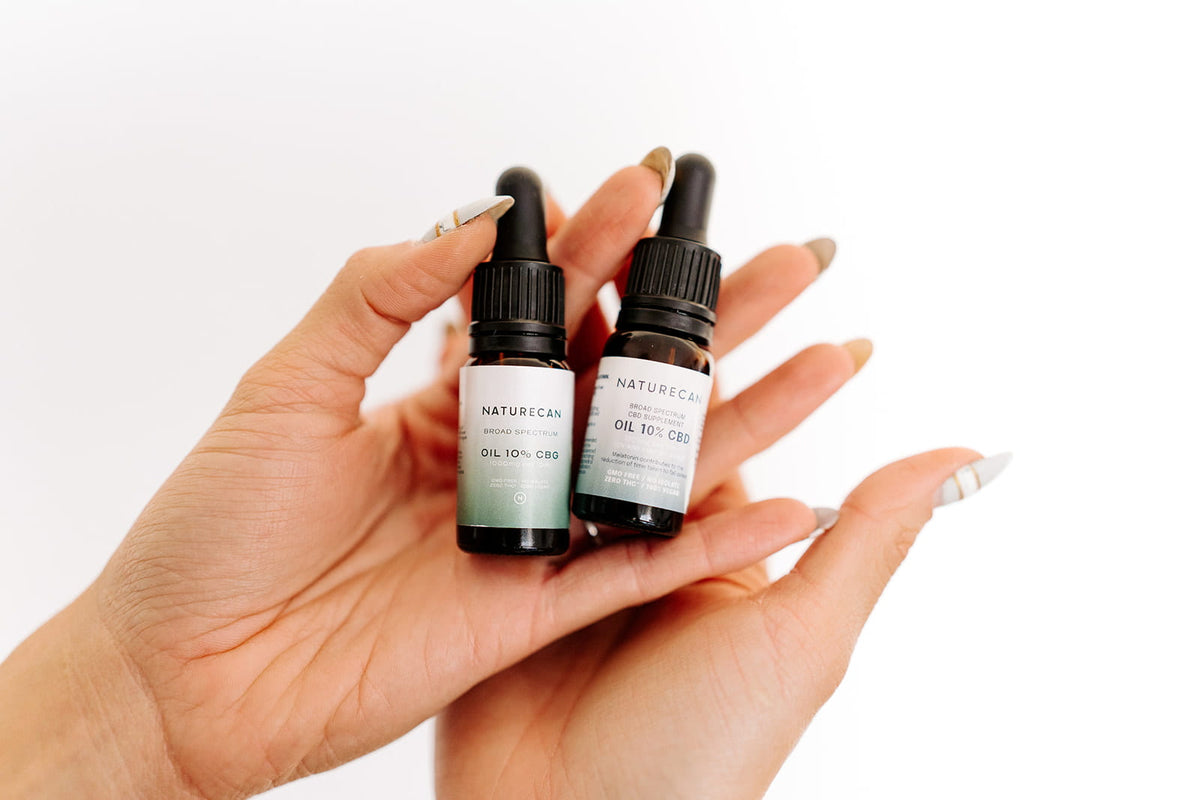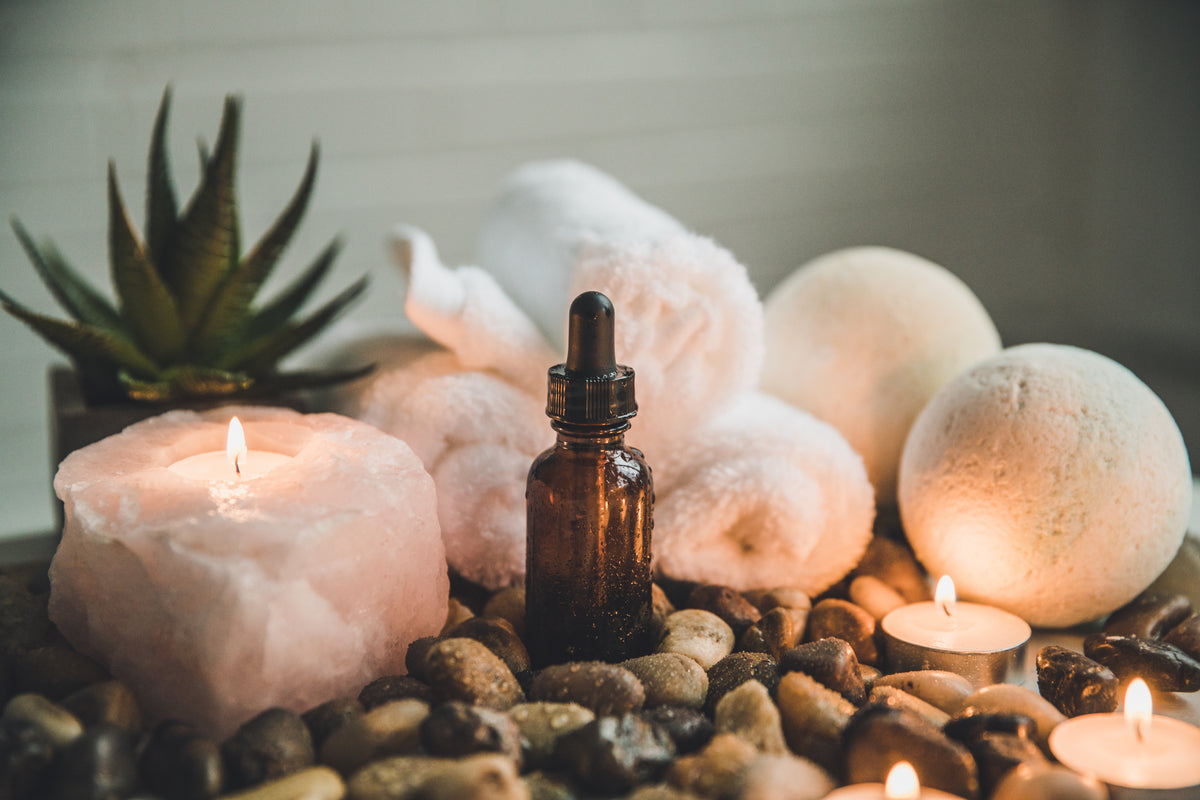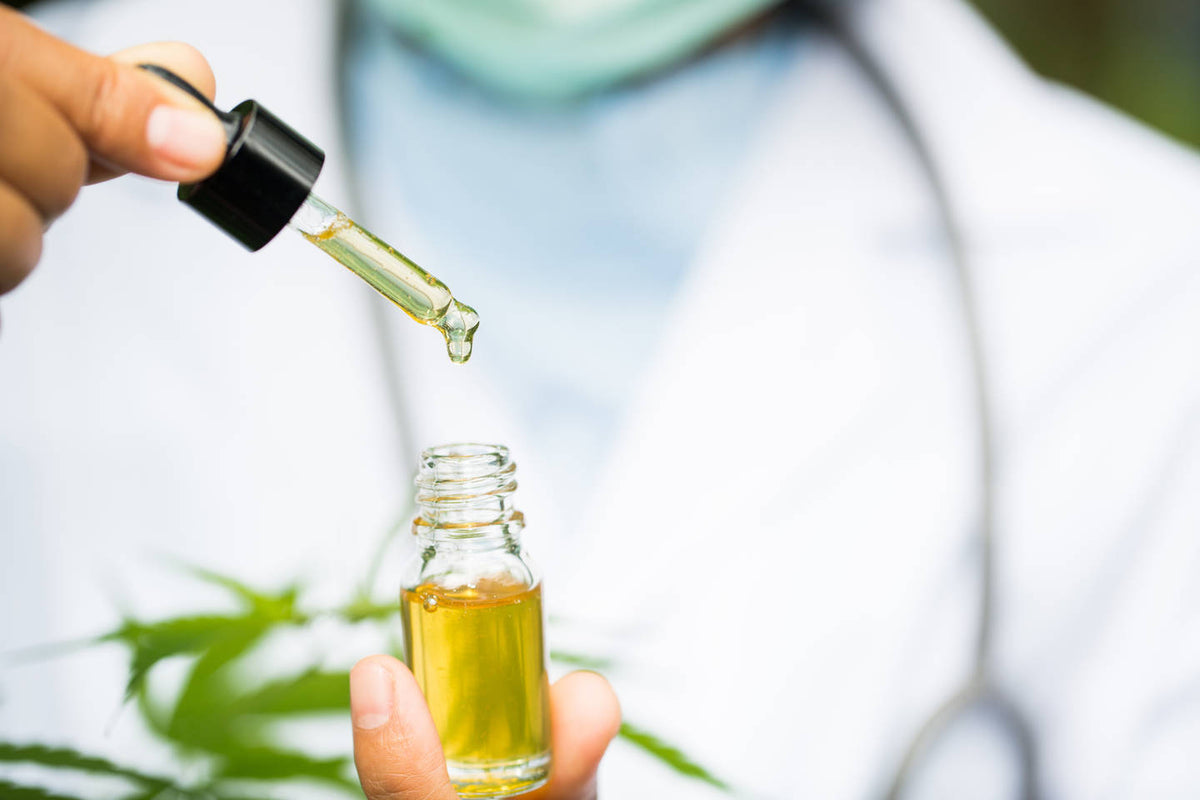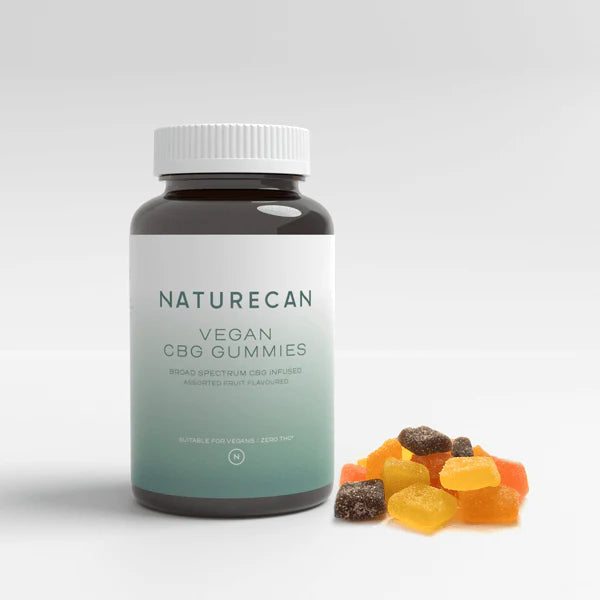What is CBD? Everything you need to know about cannabidiol

Summary:
- CBD (cannabidiol) is a compound found in relative abundance in the hemp plant (Cannabis sativa).
- Studies suggest it may have the potential to support a variety of health conditions, including anxiety, inflammation, insomnia and chronic pain.
- CBD is non-intoxicating, meaning that it will not make the user ‘high’ and is not addictive.
- While there are potential side effects to CBD use, these are rare and mild, and usually the result of taking too much CBD.
For centuries, the hemp plant (Cannabis sativa) has been considered a botanical powerhouse for its medicinal properties. Despite being somewhat neglected in the modern medicinal era, recent years have seen a resurgence of interest in the plant and its therapeutic potential.
The popularity of hemp as a natural remedy is owed to the numerous compounds found within the plant — one of which is a cannabinoid known as cannabidiol, or CBD.
Over the past few years, intensive research has been conducted to explore the potential of CBD for supporting health, and its use has grown at an astounding rate. In 2018, one study found that there were almost 1.6 million people using CBD products in the UK, and this number just keeps on growing.
So what is CBD? Here’s our comprehensive beginner’s guide to the world of CBD – we’ll explain what it is, where it came from, what it is used for, and some other facts you may not know.
- What is CBD and how does it work?
- Is CBD oil made from marijuana?
- Will CBD make you high?
- Can CBD be addictive?
- Is CBD legal?
- What are the potential benefits of CBD?
- Broad-spectrum CBD vs. full-spectrum CBD
- CBD side effects
- How to take CBD
- CBD dosage
- What to look for in CBD products
What is CBD?
Cannabidiol (CBD) is one of about 140 cannabinoids found in the hemp plant (Cannabis sativa). It is the main active ingredient in hemp-based products, including CBD oils, edibles, topicals, capsules and vapes.
CBD has been used by humans for thousands of years for its various therapeutic properties. Unlike tetrahydrocannabinol (THC), which is the main intoxicating compound in cannabis, CBD is non-intoxicating, so it does not make the user ‘high’ or cause addiction, making it completely safe for consumption.
How does CBD work?
CBD works by interacting with the endocannabinoid system (ECS), an intricate cell-signalling network found throughout the body. This system regulates many vital functions, including sleep, mood, pain, appetite and memory, and helps to maintain a steady state of equilibrium (or “homeostasis”) within the body.
The ECS consists of three key components: endocannabinoids, cannabinoid receptors, and enzymes.
1. Endocannabinoids
Endocannabinoids are molecules produced by the body that regulate many neuronal functions. They bind to cannabinoid receptors and signal to the ECS when it needs to take action (e.g. to relieve pain).
The two main endocannabinoids are anandamide (AEA), which affects the brain’s reward system, and 2-arachidonoylglycerol (2-AG), which regulates the circulatory system.
2. Cannabinoid receptors
Endocannabinoids attach themselves to cannabinoid receptors in order to support the body. The two main types of cannabinoid receptors are known as CB1 and CB2.
CB1 receptors are located primarily in the brain and central nervous system, while CB2 receptors are mainly found in the immune system and peripheral organs.
3. Enzymes
Enzymes break down endocannabinoids once they have carried out their function.
The two main enzymes involved in this process are fatty acid amide hydrolase (FAAH), which breaks down anandamide (AEA), and monoacylglycerol acid lipase, which breaks down 2-arachidonoylglycerol (2-AG).

While experts are still not entirely sure how CBD interacts with the ECS, it is believed that it binds weakly to the CB receptors and affects the body indirectly. For example, CBD prevents the enzyme FAAH from breaking down endocannabinoids like anandamide, thereby increasing endocannabinoid concentrations and enabling them to have a greater effect on the body.
In addition, when CBD is consumed along with the intoxicating cannabinoid tetrahydrocannabinol (THC), the extended presence of endocannabinoids like anandamide can in turn prevent THC from binding to the CB receptors in the brain and producing a ‘high’. In this way, CBD can also indirectly counteract the intoxicating effects of THC.
CBD history
Hemp originated in Central Asia and is believed to have come to Europe around 1,200 BC, before it subsequently spread throughout the world. Back then, the plant was mainly exploited for its medicinal benefits, with folk remedies and primitive medications using various parts of the plant to manage convulsions, dysentery, arthritis, childbirth complications, rheumatism and even insomnia.
The compound CBD was first discovered in the 1940s, when Roger Adams successfully isolated CBD and another hemp cannabinoid called CBN (cannabinol). However, scientists at the time were more interested in studying THC, which we will talk about later in this article.
In 1946, Dr. Walter S. Loewe directed the first CBD testing on lab animals, concluding that CBD did not alter their mental state. That same year, a research team headed by Professor Raphael Mechoulam (commonly recognized as the grandfather of cannabis research) discovered the endocannabinoid system and the three-dimensional structure of CBD – two discoveries which would bring CBD into the limelight and transform our understanding of cannabis.

Soon after, British pharmacologists released the first CBD oil intended for therapeutic uses. Research into the potential health benefits of CBD continued to gain momentum around the world, catalysed by important research in the 1980s into CBD’s potential for supporting people with epilepsy.
By 2007, hemp cultivation licenses had been granted to two farmers in North Dakota, and in 2014, US President Barack Obama signed the ‘Farm Bill’, authorizing research institutes to start piloting hemp farming programs.
A later amendment to the Farm Bill in 2018 completely separated CBD and hemp from scheduled drugs banned by the Controlled Substances Act, which meant that hemp-derived CBD could not be treated as an illegal drug anymore.
The same year, the US Food and Drug Administration (FDA) approved the first CBD oral medication, Epidiolex, for the treatment of seizures in epilepsy patients aged 2 years and older.
Today, hemp-derived CBD is widely used as a dietary supplement, and consumers are able to choose from a variety of products, including CBD oils, CBD capsules, CBD topicals, CBD edibles and CBD vape juices.
Is CBD oil made from marijuana?
Now that we’ve explored the history of CBD, it’s time to delve into some common questions surrounding this cannabinoid.
Hemp and marijuana are two variants of the cannabis plant. While they are technically the same species, their chemical properties differ significantly.
Hemp is the non-intoxicating form of cannabis, cultivated largely for industrial and agricultural purposes. It is rich in CBD and contains only trace amounts of the intoxicating phytocannabinoid THC.

Marijuana, on the other hand, contains high levels of THC (up to 40%) and is cultivated mainly for recreational purposes.
While CBD oil can be made from both hemp and marijuana, marijuana-derived CBD has much higher THC content than hemp-derived CBD and is therefore illegal in many countries, including the UK.
When buying CBD oil, it is important to be aware of which plant species it has been obtained from. Naturecan’s CBD is derived exclusively from organic US-grown hemp plants, with non-detectable THC (<0.01%) guaranteed.
What is THC?
Tetrahydrocannabinol (THC) is a cannabinoid that, unlike CBD, is intoxicating and responsible for creating the ‘high’ normally associated with cannabis.
THC causes brain cells to release dopamine, a chemical that causes feelings of euphoria. It also obstructs information processing in the hippocampus, the region of the brain in charge of forming new memories.
Like CBD, THC is also available in the form of oils, edibles, tinctures, and more. However, when both compounds interact with the body’s endocannabinoid system, they produce very different effects. Indeed, they are often used in a synergistic combination in commercial products to yield various medicinal benefits.
Will CBD make you high?
No. Cannabidiol is 100% non-intoxicating, meaning that it will not make you high or create feelings of euphoria, unlike THC.
This is illustrated by a 2016 study which showed that active THC caused significant physical and psychological effects, including increased heart rate and euphoria, whereas CBD did not adversely affect heart rate, blood pressure, or cognitive functioning.
Can CBD be addictive?

No. As CBD is not intoxicating, it does not make the user high or cause addiction.
As per a report by the World Health Organization (WHO), results from a well-controlled human experimental trial indicated that CBD was not associated with abuse potential. Moreover, CBD might even help in the treatment of drug addiction.
Indeed, early evidence from scientists suggests that CBD may lower the possibility of developing methamphetamine and cocaine use disorders, and also help avoid relapse after detoxification and sobriety.
Is CBD legal?
Yes, CBD is legal in many countries throughout the world, although laws about THC content vary in different territories.
In the UK, any product derived from cannabis containing 0.2% THC or less is regarded as safe and legal for consumption.
Will CBD make me fail a drug test?
CBD alone is not illegal, so should not cause anyone to fail a drug test at work or when driving. Of course it’s very important to choose a brand that has been tested to prove it has a non-detectable level of THC, and is going through the Novel Food Licensing process. Naturecan CBD meets these requirements.
How long does CBD stay in your system?
While CBD’s effects are most noticeable for between 2 and 6 hours, it can actually stay in your system for between three and five days. This timeframe (also referred to as CBD’s half-life) differs for each person and depends on various factors, including:
Typically, edible CBD products stay in your system for longer as they release CBD slowly throughout the body. On the other hand, topical CBD products stay active for a shorter length of time because they interact mostly with cannabinoid receptors in the skin rather than within the body. CBD’s half-life can also be extended by taking it with a fat source or by taking larger and more frequent doses.
What is the difference between CBD oil and hemp oil?
The terms “CBD oil” and “hemp oil” are often used interchangeably. However, there is one major difference – their origin of extraction.
CBD oil is derived from hemp but is a broad term used to describe any oil containing CBD. As explained above, CBD oils can be obtained from other strains of the plant which contain a higher percentage of THC, such as marijuana.
On the other hand, hemp oil is an extract of hemp with high concentrations of CBD and trace quantities of THC. It is obtained from various parts of the plant, including the stems, stalks, and flowers, and is used to produce oils and tinctures.
So simply put, hemp oil is always extracted from the hemp plant, whereas CBD oil may be extracted from other varieties of cannabis. Just remember: hemp oil can be called CBD oil, but CBD oil isn’t always hemp oil.
You may also have heard of hemp seed oil. While hemp seed oil is sometimes referred to as hemp oil, it is different to both CBD and hemp oil because it is made exclusively from the seeds of the hemp plant, and therefore does not contain any CBD.
What are the potential benefits of CBD?
As mentioned above, CBD has numerous therapeutic properties. Let’s take a look at some of the main CBD effects.
Stress & Anxiety
Research indicates that CBD can support people suffering from stress and anxiety.
For example, a 2019 study measured the anxiety levels of 57 men before a public-speaking event, having been given CBD oil (100mg, 300mg or 600mg) or a placebo. The results showed that men given the 300mg dose of CBD exhibited fewer symptoms of anxiety than those given a placebo or the 100mg dose. (This study used very high doses of CBD and we would not recommend taking more than 70mg per day.)
Some animal studies have also shown that CBD can have substantial anxiolytic (anxiety-relieving) effects, as a result of how it interacts with receptors and chemicals in the brain.
Furthermore, a study published in 2015 suggested that CBD has significant potential in the treatment of epilepsy. Stress can contribute to the development of epilepsy and also be a trigger for epileptic seizures.

Inflammation & Pain

Many studies, mainly involving animal subjects, have demonstrated how CBD might help to support health conditions such as chronic pain and inflammation by influencing endocannabinoid receptor activity and interacting with neurotransmitters.
For example, one animal study revealed that applying CBD cream to the joints of rats had the potential to reduce swelling and improve limb posture. Another study found that CBD could support rats with osteoarthritis, by blocking joint pain in a dose-dependent manner and preventing any future nerve damage and related pain in arthritic joints.
Sleep
Studies have shown that CBD can help to support sleep. One of the ways it does this is by influencing the amount of adenosine produced by the body.
Adenosine is a compound that regulates feelings of tiredness: high levels of adenosine help us fall asleep, and lower levels help us stay awake. CBD doesn’t increase adenosine levels; instead, it helps to regulate them so that they match the body’s circadian rhythm, thereby supporting normal sleep patterns.
In addition, studies investigating a link between CBD and improved sleep highlight how CBD interacts with GABA and serotonin receptors in the brain to promote relaxation and sleep. GABA is the primary inhibitory neurotransmitter within our body that helps to calm excessive brain activity and support relaxation. Serotonin is a chemical that helps reduce anxiety and improves mood, both of which promote better sleep.

The difference between full-spectrum and broad-spectrum CBD
If you’re looking to buy CBD products, you’ll probably come across two very commonly used terms: full-spectrum and broad-spectrum. It’s important to understand the difference between the two.
The main difference between full-spectrum and broad-spectrum CBD products is their THC content. A CBD product containing up to 0.3% THC or more, along with a mixture of naturally-occurring plant extracts, such as terpenes and other cannabinoids, is considered a full-spectrum CBD product.
While broad-spectrum CBD products also contain many plant compounds, they contain negligible amounts of THC, i.e. less than 0.3%. For this reason, broad-spectrum CBD is widely considered to be safe for consumption, whereas full-spectrum products are illegal in many countries due to the risk of intoxication.
You may also be wondering: what is CBD isolate? Well, it is the third common type of CBD – the pure form with no other cannabis-derived plant compounds. Unlike broad and full-spectrum CBD, CBD isolate does not offer the potential benefits of the ‘entourage effect’ – which is based on the hypothesis that the effects of the whole cannabis plant are greater than the sum of its individual cannabinoids, due to an interaction between them.
Naturecan’s CBD products are made with broad-spectrum CBD and therefore offer all the potential benefits of the ‘entourage effect’ – with non-detectable THC guaranteed.
CBD side effects
CBD affects everyone differently. While there have been no serious reported side-effects of CBD consumption, it is recommended that you start by consuming low doses and slowly increase the amount until you notice positive effects.
Some uncommon side-effects of CBD include:
- Dry mouth
- Light-headedness
- Reduced blood pressure
- Changes in appetite
- Mood alterations
- Diarrhoea
As CBD oil can also raise levels of liver enzymes, people with liver disease must use such products under the expert care and guidance of a doctor with regular checks of blood liver enzyme levels.
In addition, CBD oil should not be used during pregnancy and breastfeeding to avoid any potential risks to the baby’s development, as CBD can pass through the placental barrier.
How to take CBD?
There are many different ways to take CBD. With so many different CBD products on the market, it can be hard to choose the one that’s right for you. Let us guide you through the different ways to introduce CBD to your daily routine:
1. CBD capsules
CBD capsules are a good place to start for people new to CBD, as they are easy to take and offer a simple way to manage your dosage.
To take CBD capsules, simply swallow them with some water. CBD capsules usually take 1-2 hours to work and the effects can last for 2-8 hours.

2. CBD oils
CBD oils have higher bioavailability than most other means of administration, which means that CBD enters the bloodstream faster and takes effect sooner.
To take CBD oil, administer the required number of drops under the tongue (sublingually) and hold them there for one minute before swallowing. CBD oil starts working within 15-30 mins, and its effects can last for 2-8 hours.
3. CBD balms
While CBD oils and CBD capsules work systemically to affect the whole body, CBD balms and other skincare products allow the user to target problem areas, such as sore joints or muscles, and keep CBD benefits localised to the point where they are most needed. To use CBD balms, simply apply a thin layer to the affected area 2-3 times per day. As CBD balms and creams interact directly with the skin, they can begin to take effect within 10-30 minutes. These effects can last for 2-8 hours.

4. CBD edibles
CBD snacks are a delicious and easy way to get your daily dose of CBD. Popular edibles include cookies, gummies, brownies, nut butters and chocolates. As they have to pass through the digestive system before entering the bloodstream, CBD edibles take longer to have an effect than other products (typically 1-2 hours). However, their effects can last for up to 8 hours, as the CBD is released slowly throughout the body.
5. CBD vapes
CBD vapes are an effective way to absorb CBD into the body. They have the highest bioavailability of all popular routes of administration, as the CBD is absorbed directly into the bloodstream via the lungs.
CBD e-liquids can take effect within minutes; however, due to their rapid absorption, these effects are relatively short-lived (2-3 hours) when compared to CBD oils or edibles.
While vape products are seen as a reduced risk alternative for smokers, we would not encourage non-smokers to take up vaping.
CBD dosage: How much should I take?
The FDA (Food and Drug Administration) has not yet recommended a standard daily dose for CBD, which means that many people don’t know where to start.
The first thing to know is that dosage differs for each person, depending on a range of factors, including their weight, height, and reasons for taking CBD. For those new to CBD, we recommend starting with a low dose (e.g. 2 mg) and increasing this gradually until the optimal dosage is found. Alternatively, our CBD Oil Dosage Calculator can provide a recommendation based on the individual’s needs.
The FSA (Food Standards Agency) recommends a maximum total daily CBD dose of 70mg, so please ensure that you never exceed this amount. Following this guidance, you can manage your dosage based on what works best for you and combine other CBD products if desired.
What to look for in CBD products
When buying CBD oil, make sure that the oil is derived from hemp plants containing safe levels of THC (less than 0.3%), that it is completely plant-based (with no added synthetic material), and that the seller provides a Certificate of Analysis for the oil as proof of its safety and quality.

- Safe THC content
- Plant-based CBD
- Certificate of Analysis available
- Organic hemp cultivation (ideally US-grown)
- Free from pesticides and additives
- Certified producer
- Regular testing by third-party laboratories
Naturecan’s CBD oil has non-detectable levels of THC and is derived exclusively from US-grown hemp plants, which means that we never use isolates or synthetic materials and only ever use natural, plant-based CBD.
Furthermore, all our products undergo strict testing by independent laboratories to guarantee their safety and quality, and our Certificates of Analysis are easily accessible for full transparency.
Is CBD safe for pets?
Yes, CBD is safe for pets.
All mammals have an endocannabinoid system that keeps the body in a balanced state by regulating essential psychological and physiological functions. CBD interacts with the ECS in a similar way for both animals and humans.
Initial studies have shown that CBD can help with a number of pet conditions. If you want to learn more about CBD for pets, check out our blog post here.

How do cannabinoids differ?
CBD, also known as cannabidiol, is one of the most prominent cannabinoids present in the cannabis plant. But did you know that cannabinoids can also be produced by the human body and by scientists in a lab?
While cannabinoids present in plants are called phytocannabinoids, the type produced by the human body go by the term endocannabinoids, whereas cannabinoids made in laboratories are referred to as synthetic cannabinoids.
All can interact with the human Endocannabinoid System (ECS), even if not in the exact same way.
For example, both CBD and THC are phytocannabinoids, but they have very different effects. THC is a controlled substance that is well known for its intoxicating effects. On the other hand, CBD is legal and is known for its potential health benefits that can be achieved without ever inducing any intoxication.
The two differ so much that some research suggests they can impact each other’s effects. Scientists are putting a lot of focus on exploring the relationships between different cannabinoids, especially CBD’s potential to counteract some of the side effects of THC. This could help many users of medical cannabis who struggle with living their lives while on medication with a high THC content.
Because of their abundance in the cannabis sativa plant, both THC and CBD are classified as major cannabinoids. In the case of hemp, CBD will be the dominant cannabinoid, while in cannabis plants cultivated for medical purposes, the THC content will be much higher.
The remaining cannabinoids found in the plant such as CBG, CBC and CBN, are classified as minor. Keep in mind that “minor” refers to their low concentration in the plant, and is not a reflection of their potential health benefits.
What do cannabinoids do in the body?
As soon as cannabinoids enter the human body, their main task and focus is to interact with the cannabinoid receptors.
Cannabinoid receptors have an important role in the Endocannabinoid System (ECS). The other two are endocannabinoids (which play the role of neurotransmitters) and enzymes (responsible for removing cannabinoids that have fulfilled their purpose).
The two most prominent endocannabinoid receptors are CB1 and CB2 receptors. CB1 receptors can be found in abundance in the brain and central nervous system, while CB2 receptors are mainly linked to the immune system.
Everyone has an ECS, and produces endocannabinoids that are capable of binding to, and activating, the CB1 and CB2 receptors. Through these interactions, endocannabinoids can impact various processes, such as immune response, sleep, mood, stress, and more.
Contrary to popular belief, not all cannabinoids extracted from plants (such as CBD) bind to the receptors in the same way endocannabinoids do. Instead, they indirectly interact with the cannabinoid receptors, and through that supporting the optimal functioning of the ECS.
What are terpenes?
Every cannabis plant has a unique, sweet smell, which becomes more potent when exposed to heat.
Interestingly enough, it is not cannabinoids that give cannabis its scent, as cannabinoids have no smell at all. Instead, the characteristic fragrance you experience when using hemp-derived products is due to terpenes.
Terpenes are not exclusive to cannabis. They are abundant in the natural world, and they are the reason why fruit and flowers smell the way they do.
For plants, the role of terpenes is clear. Their role is to protect a plant from predators or pathogens or attract pollinators when the time is right.
The terpenes that are most prominent in nature, and can be found in abundance in many cannabis plants, are:
Pinene
Pinene is responsible for the smell of trees in the forest or the Christmas tree in your living room.
Limonene
The citrusy smell of oranges, lemons and certain cannabis strains is thanks to limonene. This terpene is also often used in air fresheners, cleaning products, and foods.
Linalool
Linalool is very prominent in lavender (and is an essential ingredient in any lavender-scented product) but is also present in basil.
Terpinolene
Found in nutmeg and cumin, terpinolene has a more prominent, heavier smell than limonene or pinene.
Do terpenes have any health benefits?
However, research is finding that terpenes may provide other benefits in addition to pleasant scents. The relationship between terpenes and health are beginning to be recognised and more studies are on the way – so watch this space!
For example, when tested on mice, limonene has shown some potential antidepressant properties. Pinene shows some promise as an anti-inflammatory ingredient, and terpinolene is currently being tested to explore its antioxidant properties.
How is CBD oil made?
The journey of the cannabis sativa plant as a seed to CBD Oil in nutritional supplements and foods is a lengthy and complex one!
The first step is always CBD extraction. While CBD can be extracted from hemp using various techniques, the cannabis industry considers the CO2 extraction method to be best.
CO2 extraction allows cannabinoids to be extracted from plant matter efficiently and safely.
It is also the most expensive extraction method. While Butane or Ethanol extraction are cheaper, they carry higher risk and yield lower quality end products.
When it comes to extraction, the price does correspond to the final product’s quality.
How is CBD extracted at Naturecan?
At Naturecan, all of our products contain CBD Distillate Oil from US organically grown hemp, extracted using the CO2 method.
This method uses CO2 in a supercritical state. CO2 has a unique ability to act as both gas and a liquid, depending on the temperature and pressure it is exposed to.
The process usually requires the use of a machine that consists of multiple chambers. The plant matter (hemp) is placed in one chamber and CO2 in another. When the moment is right, the CO2 is moved into the chamber with hemp, and then, by manipulating CO2 through temperature and pressure, the extract and supercritical CO2 move from chamber to chamber, leaving us with a mix of the desired extract and CO2.
After the CO2 evaporates, the extraction process is completed, and the result is a full-spectrum CBD oil.
What happens next?
This extract is not the final CBD Oil product. At the next stage, all impurities and unwanted compounds must be removed.
For example, In the UK, CBD Oil may only contain non-detectable levels of the intoxicating, controlled cannabinoid, THC.
During this stage, other minor, legal cannabinoids are preserved, including CBG, CBC and CBDa.
Difference between CBD oil concentrations
You’ll notice that CBD Oils have varying percentages on their labels, indicating the concentration of the CBD in the bottle.
First-time users are always recommended to choose a lower concentration, so a 5% or 10% CBD oil is a good starting place. This is because it is much easier to adjust your dose with CBD oils that have lower CBD concentrations.
We recommend you use our CBD Oils Dosage Calculator to find the perfect starting dose.
Remember that everybody is different, sojust a suggestion for when you first start taking CBD. To find the correct dosage for you, you may need to slowly increase your intake. This is easier to do if you start with lower concentration.
After you have managed to identify your perfect CBD dose, you can change to a stronger CBD oil (if that’s what your body wants and needs), but do not exceed a daily CBD dose of 70mg.
CBD oil ingredients
What does a bottle of CBD oil contain? Much more than just CBD!
Cannabinoids
CBD is one of many cannabinoids found in the cannabis plant and is the star ingredient of all CBD oils.
Depending on the type of CBD oil, CBD will be the only cannabinoid or one of many present in your oil.
At Naturecan, we make sure that our broad-spectrum CBD oils have non-detectable THC, but contain a plethora of other legal cannabinoids. This allows you to take advantage of any potential benefits of these cannabinoids, and the entourage effect.
You can find a full list of different cannabinoids found in our oils when checking the certificates of analysis from third-party labs.
Terpenes
Terpenes are chemical compounds found in various plants, including cannabis.
They are responsible for the smell of hemp (and your CBD oil) and contribute significantly to its flavour.
There are many different terpenes, and many of them appear in other species. Pinene, for example, is a terpene that is vastly present in hemp but is also a dominant terpene in forest trees.
Early research suggests that terpenes might have health benefits of their own.
Carrier oil
A bottle of CBD oil will contain a mixture of CBD, other compounds (such cannabinoids or terpenes), and carrier oil.
CBD needs to be mixed with a carrier oil for your body to be able to digest it correctly.
The most popular oils used by CBD producers are Hemp Seed Oil and MCT carrier oil (such as coconut oil).
Each of the oils comes with its own beneficial ingredients. For example, hemp seed oil contains vitamins, minerals, and Omega-3 and Omega-6 fatty acids, while coconut oil contains vitamin E and various minerals.
What does CBD oil taste like?
Many first time CBD users wonder about the taste of CBD oil. If you have no previous experience with hemp products, it makes it challenging to imagine what flavour to expect.
Most CBD oils will always have a slightly earthy, mushroomy or forest-like flavour, our CBD oil is very mild-tasting.
Additionally, every CBD oil contains a carrier oil which also influences the taste of the end product. Necessary for effective absorption of CBD, the carrier oil is usually either Hemp Seed Oil or MCT oil (such as coconut oil).
CBD oils containing Hemp Seed oil will extenuate the natural flavour of CBD, while MCT will help mask the natural taste slightly, but will not dominate or hide it completely.
Many people genuinely enjoy the natural flavour of CBD. If you like mushrooms and enjoy full flavours, chances are you will have a great experience while using your CBD oil.
That said, the flavour of CBD is not everyone’s cup of tea. CBD users who enjoy sweeter flavours in life can opt for CBD gummies, CBD chocolate or CBD cookies instead.
Users who do not enjoy the natural flavour of CBD oils, and would rather not add any sugar to their diet, can consider the only flavourless CBD option available on the market – CBD capsules.
Why choose Naturecan?
Now that you’re familiar with CBD and its potential benefits, you may want to try it out for yourself. If so, please explore our wide range of CBD products and select those that best suit your needs.
Naturecan offers an extensive and exclusive range of quality CBD products and supplements. With websites live in over 30 countries worldwide, we use our global reach to deliver the health benefits of CBD to a growing customer base.
All of Naturecan’s products are created using industry-leading technology, and undergo rigorous testing practices with third parties in order to ensure product quality, customer safety and supply chain transparency.
Our CBD oil is a broad-spectrum distillate, with non-detectable levels of THC and high bioavailability, making it the safest and purest oil on the market. It is derived exclusively from US-grown hemp plants, which means that we never use isolates or any man-made synthetic material, and only ever use natural, plant-based CBD.
Disclaimer: CBD products have not been approved by the FDA. However, the WHO does recognize CBD as a non-toxic and safe compound with little to no side-effects. There is currently insufficient evidence to support the use of CBD in the condition(s) mentioned above and this text by no means reflects recommended uses. Always seek the advice of your healthcare professional if you are taking prescribed medication or are thinking of using CBD for your condition.
Written by Alex Coughlan and reviewed by our qualified expert, Moyra Cosgrove, Head of Nutrition at Naturecan, SENR Registered Nutritionist and DProf candidate at LJMU
References:
https://www.ncbi.nlm.nih.gov/pmc/articles/PMC6326553/
https://www.ncbi.nlm.nih.gov/pmc/articles/PMC7023045/#B14-antioxidants-09-00021
https://www.ncbi.nlm.nih.gov/pmc/articles/PMC7204604/
https://www.liebertpub.com/doi/full/10.1089/can.2018.0006
https://www.ncbi.nlm.nih.gov/pmc/articles/PMC6460372/
https://pubmed.ncbi.nlm.nih.gov/24934539/
https://www.ncbi.nlm.nih.gov/pmc/articles/PMC3797438/
https://ministryofhemp.com/blog/cbd-history/
https://www.ncbi.nlm.nih.gov/pmc/articles/PMC5767492/
https://www.livescience.com/24553-what-is-thc.html
https://www.ncbi.nlm.nih.gov/pmc/articles/PMC5361620/
https://www.who.int/medicines/access/controlled-substances/5.2_CBD.pdf
https://www.ncbi.nlm.nih.gov/pmc/articles/PMC6680550/
https://www.scielo.br/j/rbp/a/ksNG6tq9JC8pT8rdmCk7TTb/?lang=en
https://pubmed.ncbi.nlm.nih.gov/24923339/
https://www.ncbi.nlm.nih.gov/pmc/articles/PMC4604191/
https://www.ncbi.nlm.nih.gov/pmc/articles/PMC4851925/
https://www.ncbi.nlm.nih.gov/pmc/articles/PMC5690292/
https://www.ncbi.nlm.nih.gov/pmc/articles/PMC2769007/
https://pubmed.ncbi.nlm.nih.gov/15575797/
https://www.jneurosci.org/content/39/44/8762
https://www.frontiersin.org/articles/10.3389/fncel.2016.00294/full
https://www.frontiersin.org/articles/10.3389/fnmol.2018.00424/full
https://www.ncbi.nlm.nih.gov/pmc/articles/PMC5877694/
https://www.sciencedirect.com/science/article/pii/B9780128229194000168
https://www.medicalnewstoday.com/articles/what-are-terpenes
https://pubmed.ncbi.nlm.nih.gov/33564342/
https://www.frontiersin.org/articles/10.3389/fpsyt.2021.583211/full
https://pubmed.ncbi.nlm.nih.gov/24084350/
https://www.ncbi.nlm.nih.gov/pmc/articles/PMC2868018/
https://pubmed.ncbi.nlm.nih.gov/30395784/







